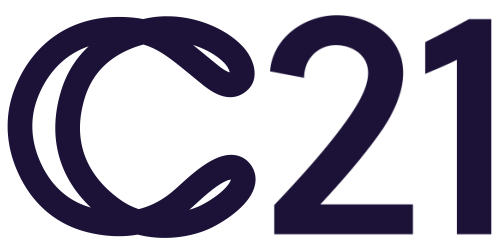Recently, I took part in my first away day at C21 where we launched our new brand identity and proposition, ‘create change’. My session focussed on how making small changes in the way we work, and our mindsets can create a positive impact.
While researching my workshop, I came across a “Change Academy” podcast called ‘How Will You Tell the Story?’ This episode looked at how to find the silver lining in the negative situations we face in our daily lives, which can be very elusive.
In our industry having a positive approach and attitude is vital. We’re challenged daily to come up with solutions to various problems. These can range from how to sensitively highlight the dangers of drinking alcohol whilst pregnant to designing and rolling out a last-minute PowerPoint presentation for a client. We must adapt fast, and we utilise a multitude of skills every day.
How we approach these events has a significant impact on the way we react, recover, and overcome these challenges. It also influences whether we achieve our objectives.
Changing your perspective on an event can open your eyes to alternative possibilities and options. This is known as ‘cognitive reframing’. Reframing isn’t about ignoring problems; it’s about adopting a fresh perspective — one that highlights opportunities for learning, positive outcomes, and optimism.
How are you telling the story?
The psychological frame you choose to adopt can dramatically affect your experience of that event. (For better or worse).
Let’s say you get some lengthy feedback from a client or colleague, some of it bad, some of it problematic, some is not very helpful at all! How you approach this feedback will affect how you respond and how you manage the process. Below is a list of frames you can use.
The shame frame
We process this experience as shameful, for example, “this feedback means I’m not good enough, I’ve let everyone down, I’m embarrassed because I didn’t nail it”. We may feel like we should give up on the project altogether and will be filled with anxiety about trying to get it right.
The blame frame
In this instance we get defensive and shift the focus and blame others, for example, “What do they know? I’m the one with a degree in advertising, I wasn’t wrong, they should have written a better brief!” Individuals who view an issue within this frame are people who don’t like to be wrong, they believe they know everything and often adopting this perspective is a way of protecting their ego.
The game frame
Approaching feedback through the game frame is a very positive mindset. Feedback is a challenge and a fuel which helps us create the best work and get the best outcome for everyone. A problem is an obstacle course, not a barrier. It’s important to always bear in mind that the work we do isn’t life and death. No one will die if we don’t get it right straight away, so try to relax and have fun on our way to finding the right solution.
The learning frame
When we look at a problem in terms of learning, growth, and development we can reframe problems as opportunities to improve ourselves. Failure isn’t always a bad thing, it’s a stepping stone to eventually getting it right, a stepping stone to success.
When challenges arise in life, we have a choice in how we address and deal with them. Only you can choose the frame you apply to an event. By turning problems into challenges, you have the power to conquer life’s greatest obstacles.
So the next time you are faced with a challenge or a problem, take a step back, view it from a different perspective and think if you’re applying the best frame to that particular situation? If not, change your perspective and the narrative. It can help you approach the challenge with enthusiasm and a positive, can-do attitude.



